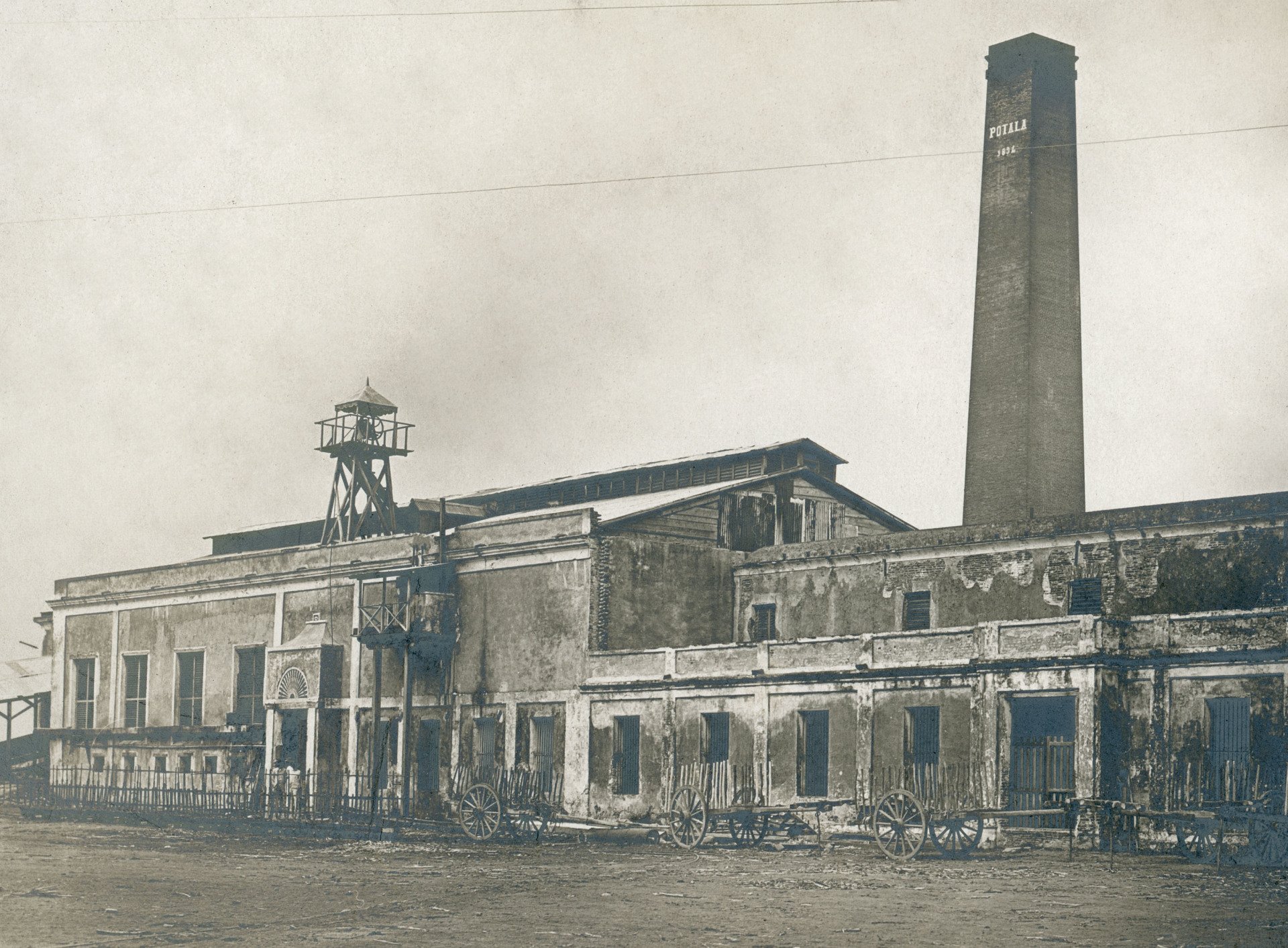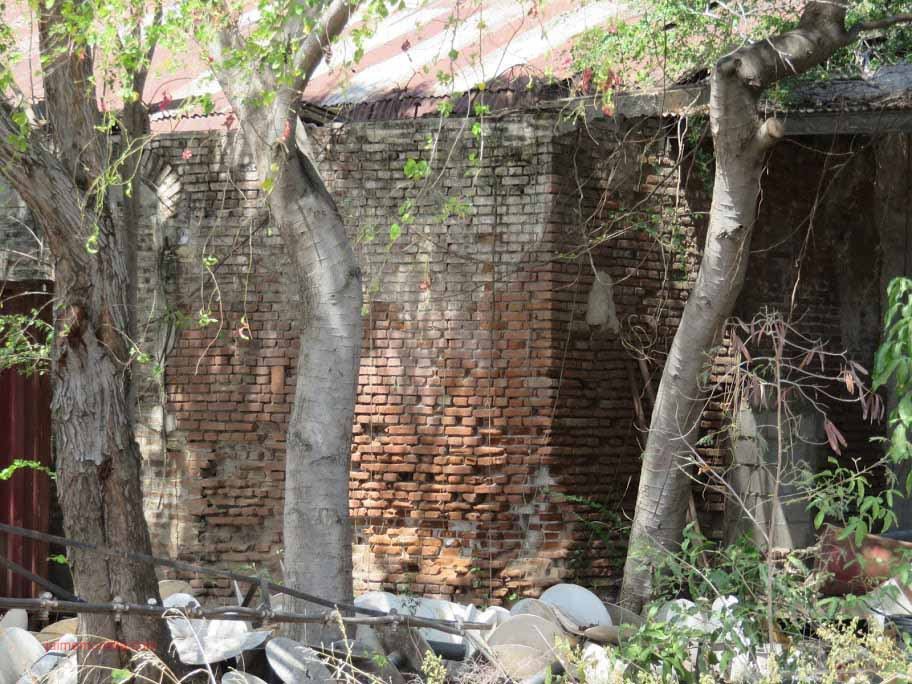
Hacienda Potala
Hacienda Potala was located in Barrio Cintrona in the municipality of Juana Diaz. It was established in 1834, the date on the chimney in the old photo below. In 1846 it was owned by Maria Tristani as evidenced by a water right granted her on April 23, 1846 as owner of Hacienda Potala to take water from the Jacaguas River.
On July 21, 1849 a similar water right was granted to Manuel Ferrer Barral ( -1881) who in the 1850s had ownership in Hacienda Cintrona and Hacienda Pastillo in Juana Diaz and Hacienda Fortuna in Ponce. Ferrer was a Spanish immigrant from Villanueva y Geltrú, Catalonia who arrived in Puerto Rico and on October 30, 1853 married Manuela Gandía Gerardino ( -1904) in Ponce. Of this marriage were born in Ponce Manuel (1856- ), Matilde (1861- ), Rafael (1865-1889), Carmen and Ana Ferrer Gandía.
Andrés Ramos Mattei in his essay La Economía de Haciendas y el Progreso de las Centrales en Ponce Hacia 1900 states that the children of Manuel Ferrer who may have never set foot on Puerto Rico, owed their well being to Hacienda Potala which Ferrer acquired ca. 1864. That is not the case as they were born in Ponce, however, they all at one point in time or another in their life returned to live some in Spain and some in France. Manuel Ferrer Gandia married Manuela Garcia Mantilla from Isabela, although owners of a plantation there, in 1877 the returned to live in Madrid.
It has also been stated in error that Manuel Ferrer Barral never lived in Puerto Rico. The facts in Sentència 20 - 4 - 1917 by the Supreme Court of Spain state that Manuel Ferrer Barral resided in Puerto Rico forty years before returning in 1877 to live in Spain where he died four years later in Barcelona. From the facts in this case it is evident that Ferrer Barral was owner of Hacienda Potala at the time of his death in 1881 as a 4/50 participation in same was awarded to his son Rafael.
There is another court case decided by Spain's Superior Court in Madrid on May 4, 1886 in which Alejandro de Rich y Tristani request reversing the decisions of a lower court. The defendant in the case was Manuel Ferrer y Barral and involves the acquisition by the latter of certain land not described, by a deed dated January 21, 1853. Although not related to Hacienda Potala since he had acquired it earlier, this case is interesting in as much as the plaintiff appears to be the son of Maria Tristani. It is therefore reasonable to believe Ferrer bought Hacienda Potala from Maria Tristani.
In her book De Los Bueyes al Vapor, Lizette Cabrera Salcedo states that related to the 1858 construction of an irrigation canal, then Public Works Inspector Timoteo Luberza stated in his approval that Hacienda Potala was "the first Ingenio on the island" in terms of production. Also, according to businessman Albert Lee, Potala was at one time the largest producer of muscovado sugar on the island.
The newspaper La Democracia edition of June 15, 1899 published the following ad; "FOR SALE sugar hacienda POTALA with 1,842 cuerdas of superior quality land, located very close to the city of Ponce and the Villa of Juana Diaz and within the island's best known sugar zone, with an average annual production of 2,000 hogsheds of muscovado sugar, excellent facilities, good machinery and adequate roads for a short and easy transport of sugarcane. For information contact its administrator in Ponce Fernando A. Vendrell." In April 1902 the then 1,709 acre Hacienda Potala was acquired by and became part of Central Aguirre.
Ramos Mattei in his essay also states that Deford & Co. was able to acquire Hacienda Potala, owned by absentee owners living in Spain since the mid 19th Century, who opted to sell after the US Occupation in 1898. Shortly after the change in sovereignty, while living in Spain, they brought the hacienda to public auction. This appears not to be the case as Manuel Ferrer Barral lived in Puerto Rico until 1877. From the court case Sentència 20 - 4 - 1917 above, it is evident that after his death in 1881 there were inheritance disputes between some of his children which may have been the reason to sell Hacienda Potala, not necessarily the change in sovereignty.
The old photo of the sugar factory was made available the courtesy by Paul Hughes.


